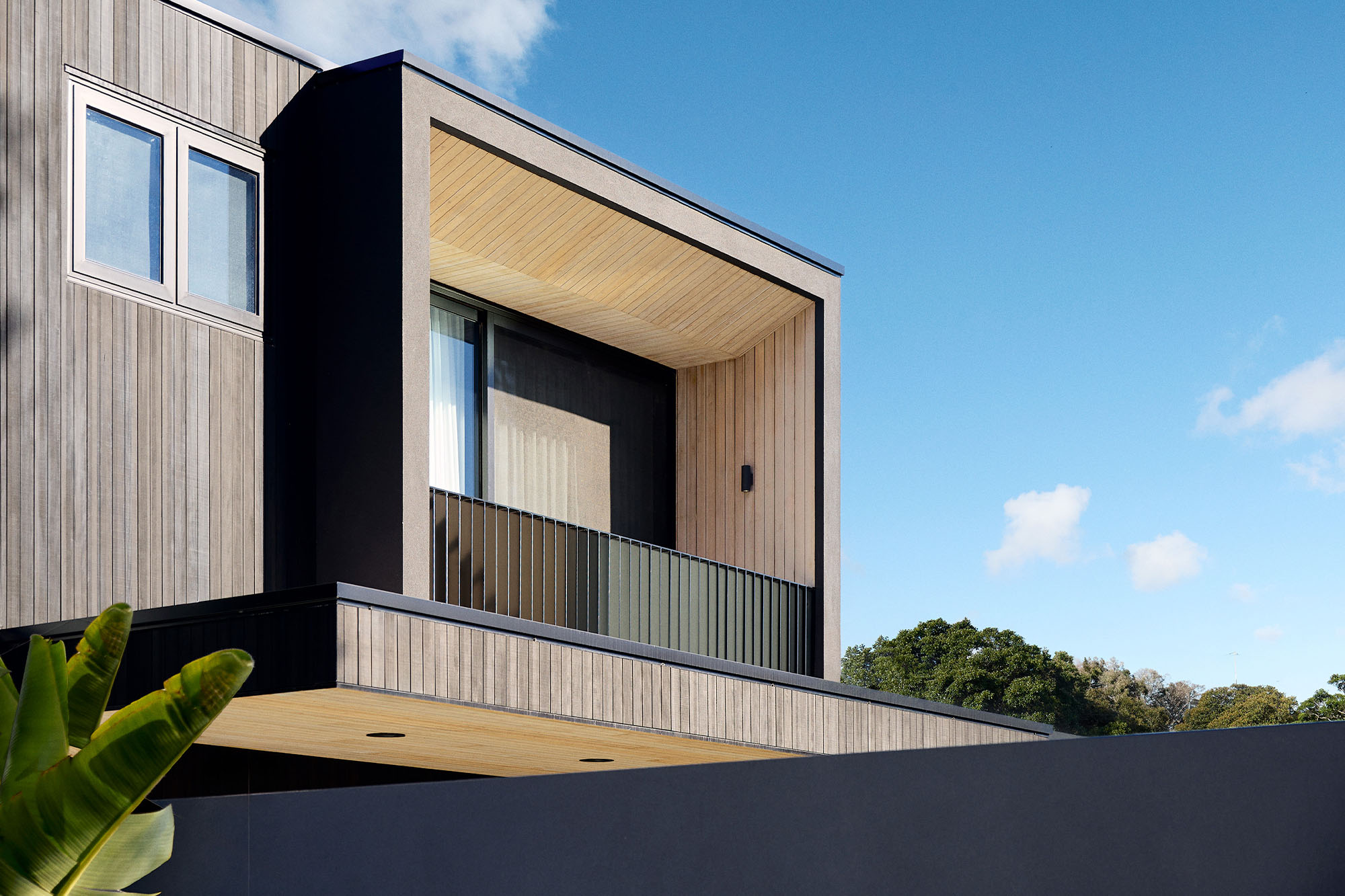Beginning a deck building project is exciting because it enhances your outdoor living space, but it also means following building codes. Building codes are crucial for the safety, durability, and legality of your deck. This article simplifies deck building codes to help you navigate the guidelines for a deck that exceeds standards.
Understanding Deck Building Codes
Building codes for decks are a compilation of guidelines that dictate the standards for construction. They cover every aspect of deck building, from the ground up, to help ensure that structures are safe and resilient. Whether you’re a seasoned builder or a homeowner venturing into a DIY project, understanding them is crucial for a successful build.
Key Building Codes for Decks
The foundation of a properly built deck lies in its adherence to the key building regulations. Let’s dive into the specifics:
Joist and Beam Specifications: The Backbone of Deck Durability and Safety
The structural integrity of your deck relies heavily on the joists and beams’ specifications. These critical components must be carefully selected and installed to ensure the deck can safely support the expected loads, including people, furniture, and environmental forces like snow.
Material Matters
For both joists and beams, pressure-treated lumber is a standard choice due to its resistance to decay and pests. Alternatives include composite materials, which offer durability without the need for chemical treatment for those seeking eco-friendly options.
Joist Sizing and Spacing
The size of joists should correspond with the deck’s size and the weight it will bear. Typically, joists are spaced 16 inches apart, center-to-center, but it can vary based on the length of the span and the type of decking material used.
Beam Dimensions
Beams provide the primary support for the joists and, therefore, the entire deck structure. The span of the beam—how far it stretches between supports—determines its required size. Larger spans or heavier loads may necessitate thicker or deeper beams to prevent sagging.
Deck Footings and Foundations: Ensuring Stability from the Ground Up
When building a deck, the foundation is crucial for its durability and safety, not just a starting point. Proper footings are key for stability against weather and wear.
Depth Requirements: Below the Frost Line
The depth of your deck footings is crucial to avoid the upheaval that can be caused by freezing groundwater. Footings must be placed below the frost line to prevent shifting and damage. The frost line varies significantly by region, from shallow depths in warmer climates to several feet deep in colder areas.
Types of Footings: From Basic to Advanced

There are several common footing types, each with its benefits and considerations:
Buried Post and Footing
This simple and cost-effective method involves pouring concrete in a hole and installing the post directly on it. While affordable, the risk of rot and instability due to water and insects makes it a less durable option.
Tube Pier
Easy to install, tube piers are concrete-filled tubes dug below the frost line. Their stability depends on soil friction, which makes them unsuitable for sandy soils.
Bell Pier
Named for their bell-like shape, these piers widen at the bottom to distribute weight over a larger area for enhanced stability. They’re particularly effective against the lifting force of frozen soil.
Pier and Footing
Pier and footing is a more complex option that requires two pours: one for the footing deep in the soil and another for the pier on top. This method offers reliability but demands more work and expertise.
Installation Techniques: Ensuring a Solid Foundation

The installation of deck footings requires careful planning and execution. Key considerations include:
- Avoiding Underground Hazards
- Proper Concrete Mixing
- Correct Pouring Practices
Understanding and implementing these footing and foundation guidelines are paramount in laying the groundwork for a deck that not only stands the test of time, but one that also ensures the safety and enjoyment of all its users.
Stairway Codes: Ensuring Safe Access

Navigating the complexities of stairway codes is critical for ensuring that deck access is both safe and compliant. According to guidelines, several key factors must be taken into account:
Riser Height
The maximum riser height allowed is generally 7-3/4 inches, though local codes may vary. This regulation helps prevent tripping hazards by ensuring that steps are not too steep.
Tread Depth
The minimum tread depth for deck stairs is typically 10 inches. This measurement ensures there’s enough foot space on each step for safer ascent and descent.
Handrail Specifications
The ideal handrail height ranges between 34 and 38 inches above the stair treads. Furthermore, handrails should be graspable to allow users to hold on securely, which is especially important in adverse weather conditions or for those with mobility challenges.
Ensuring your stairway adheres to these codes enhances safety and contributes to the overall aesthetic and functionality of your deck.
Railing and Baluster Standards

According to building codes, railings are required for decks that are more than 30 inches above the ground. Here are the specific standards to keep in mind:
Height Requirements
For residential decks, the minimum height for railings is typically 36 inches, measured from the deck surface to the top of the railing. However, for commercial decks, this requirement might be increased to 42 inches.
Baluster Spacing
The space between balusters (also known as guards) must be less than 4 inches. This prevents small children from slipping through or becoming stuck.
Strength and Secure Attachment
Railings and balusters must be strong enough to withstand a concentrated load of 200 pounds applied in any direction along the top of the railing. This ensures the railing can support individuals leaning against it. Additionally, all components of the railing system must be securely attached to the deck structure in order to be capable of resisting force without deforming or detaching.
Complying with these standards is crucial for creating a safe environment on your deck. Not only does adherence to code prevent accidents and injuries, it can also protect you from potential legal issues and fines.
Ledger Board Attachment and Flashing
Attaching the ledger board correctly is one of the most critical steps in deck construction, as it is the main support attaching the deck to the existing structure.
Proper installation and waterproofing of the ledger board are paramount to prevent water damage and ensure the longevity and safety of the deck.
Proper Ledger Board Installation

Flashing
Before installing the ledger board, metal or rubber flashing must be installed over the area where the ledger will sit. The flashing needs to extend up behind the exterior wall covering and down over the ledger board to prevent water from entering the space between the ledger and the house.
Bolting, Not Just Nailing
The ledger board should be securely attached to the house using lag screws or through bolts, not just nails. The spacing and pattern of the fasteners should comply with local building codes, typically outlined based on the deck’s size and the load it will carry.
Standoff Spacers
In certain climates or as per local codes, standoff spacers may be required to allow air to flow between the ledger board and the house to keep both surfaces dry and reduce the risk of rot.
Flashing Options and Techniques
Proper flashing techniques are crucial to redirect water away from the ledger board and prevent water infiltration that leads to decay and structural damage. There are several types of flashing available:
- Metal Flashing: Typically made from aluminum or galvanized steel, metal flashing is durable and effective. It should be installed in a way that channels water away from the ledger board.
- Rubber or Plastic Flashing: These materials offer flexibility and ease of installation. Like metal flashing, they must be installed to effectively divert water away from the ledger board and the house’s structure.
- Flashing Tape: This adhesive-backed product seals around fasteners and fills gaps to provide an additional layer of protection against water.
Ensuring that the ledger board is appropriately attached and implementing effective flashing techniques are foundational steps in deck construction. They guarantee the structure’s integrity, safety, and longevity to keep the deck functional and beautiful for years to come.
Navigating Local vs. International Codes: Ensuring Compliance on All Fronts

Building a deck requires skill, materials, and a good grasp of regulations. The International Residential Code (IRC) sets safety standards for decks, local codes and other rules for legal compliance and safety. Knowing how these regulations work together is key for any decking project.
Understanding the Differences
The IRC sets basic standards nationwide in the U.S. by covering structural integrity, materials, and safety features such as railings and stairs. Local codes can be adjusted based on regional factors like climate, soil types, and historical data on natural events. For instance, the frost line depth in your area can impact footing depth, a detail not covered by the IRC for all locations.
Local codes may include extra demands not addressed by the IRC. For instance, they may specify materials more suitable for the local conditions or additional safety measures in areas at risk of certain dangers.
Tips for Checking Local Regulations
Contact Your Local Building Department
The first step in ensuring that your deck meets all necessary codes is to reach out to your local Building Department. They can provide the most current and relevant information regarding what is required in your area.
Consult a Professional
Architects, builders, and contractors who are familiar with your locality can be invaluable resources. They stay up-to-date with both international and local codes and can help navigate the requirements for your specific project.
Review Online Resources
Many local government websites offer detailed information on deck building codes and permit requirements. Online forums and building websites may also have insights from individuals who have completed similar projects in your area.
Navigating building codes for your deck project can feel overwhelming, but it’s crucial for safety and success. Follow IRC and local codes to build a beautiful, long-lasting, and compliant deck for your home.
Common Mistakes and Misconceptions

When it comes to deck building codes, misconceptions and mistakes can result in failed inspections and unsafe structures. Clarifying these misunderstandings and offering tips to avoid compliance errors are key to ensuring deck safety and legality.
Misconception 1: “Deck Building codes are the same everywhere.”
Building codes, such as those for deck construction, can differ greatly between locations. While the International Residential Code (IRC) offers general guidelines, local modifications, and specific safety concerns can impact the final compliance standards based on environmental conditions.
Misconception 2: “If my deck is small, I don’t need a permit.”
Permits for decks are usually based on their structural impact and safety considerations rather than just size. In many areas, decks above a certain height or attached to a building require permits, irrespective of size.
Misconception 3: “Using the same materials and designs as my neighbor’s deck means I’m code-compliant.”
Assuming existing structures meet current codes can be misleading. Building codes change over time, so what was compliant before might not meet the latest standards. Project specifics like soil type, house attachment, and load requirements can differ, which can influence compliance.
DIY vs. Professional Deck Building: Making the Right Choice for Your Project
Choosing between DIY and professional deck building hinges on project complexity, code compliance, structural integrity, and available time and tools. Professionals excel in:
- Handling complex designs
- Ensuring code adherence
- Providing expert knowledge and quality assurance for safety and durability
- Managing permitting and inspections, reducing the risk of compliance issues
While DIY suits simpler projects, professionals can provide peace of mind for complex or large-scale decks by ensuring structural integrity and safety.
Start Your Deck Project with Confidence: Get Top-Quality Materials from Lumber Plus

Starting your deck building project has challenges, but you don’t have to face them alone. Lumber Plus is ready to support you with high-quality materials and ensure that your project adheres to the latest building codes. Our dedication to excellence and your project’s success distinguishes us.
Contact us today for more information!






